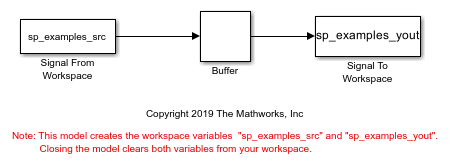rebuffer_delay
Number of samples of delay introduced by buffering and unbuffering operations
Syntax
d = rebuffer_delay(f,n,v)
d = rebuffer_delay(f,n,v,'mode')
Description
Input Arguments
| Frame size of the input to the Buffer or Unbuffer block. |
| Size of the output buffer. Specify one of the following:
|
| Amount of buffer overlap. Specify one of the following:
|
| The tasking mode of the model. Specify one of the following options:
Default: |

